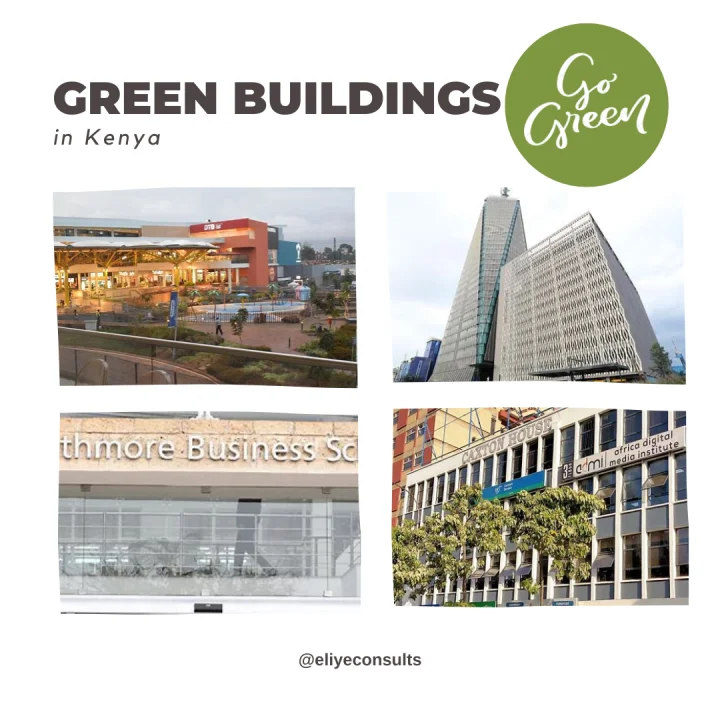
Green Building in Kenya: Concepts, Practices, and Notable
Green building is the practice of creating structures and using environmentally responsible and resource-efficient processes throughout a building’s life cycle, from siting to design, construction, operation, maintenance, renovation, and demolition. Green building aims to reduce the overall impact of the built environment on human health and the natural environment through efficient use of energy, water and materials; protecting occupant health and improving productivity; reducing waste, pollution, and environmental degradation.
The rise of green buildings in Kenya has been driven by the need to combat climate change and reduce carbon emissions. Real estate contributes up to about 30% of global annual greenhouse gas emissions. By adopting sustainable practices, developers can help mitigate these effects while creating a positive impact on the environment. IFC EDGE is a global certification system that helps developers design and deliver green buildings quickly and easily by setting minimum requirements for energy and water savings, as well as embodied energy in materials.
Some notable green-certified buildings in Kenya include:
- Caxton House is a mixed-use building located in the Central Business District of Nairobi. The project was awarded the final EDGE Certification by GBCI in February 2022.
- Garden City is East Africa’s first integrated residential, retail and office development. is one of the first projects in Kenya to receive a LEED pre-certification by the Green Building Council. It features a 3 MW solar carport that provides 30% of the mall’s electricity needs. Garden City Mall achieved EDGE certification by reducing its energy consumption by 32%, water consumption by 28%, and embodied energy in materials by 27%. The project achieved these savings by using LED lighting, motion sensors, solar water heating, dual-flush toilets, water-efficient landscaping, and recycled concrete.
- Britam Tower: This building was the first EDGE-certified building in Kenya, achieving certification by reducing its energy consumption by 42%, water consumption by 46%, and embodied energy in materials by 36%. The project achieved these savings by using high-efficiency chillers, variable speed drives, occupancy sensors, Low-E glass, low-flow fixtures, rainwater harvesting, drip irrigation, and recycled steel.
- The Strathmore University Business School, is the first academic institution in Africa to achieve LEED Platinum certification. The school uses passive design strategies, renewable energy sources, water conservation systems, and recycled materials.
These buildings have been certified as green due to their adherence to sustainable design principles and their positive impact on the environment. The uptake of green buildings in Kenya has been increasing, with 43 certified buildings as of 2021, representing a 100% rise from the previous year. By embracing green building practices, Kenya is taking significant steps towards a more sustainable future. These initiatives not only contribute to environmental conservation but also offer long-term benefits such as reduced utility costs for building occupants.


